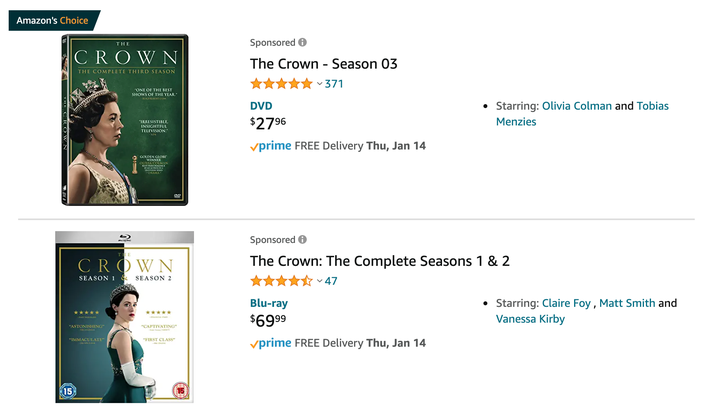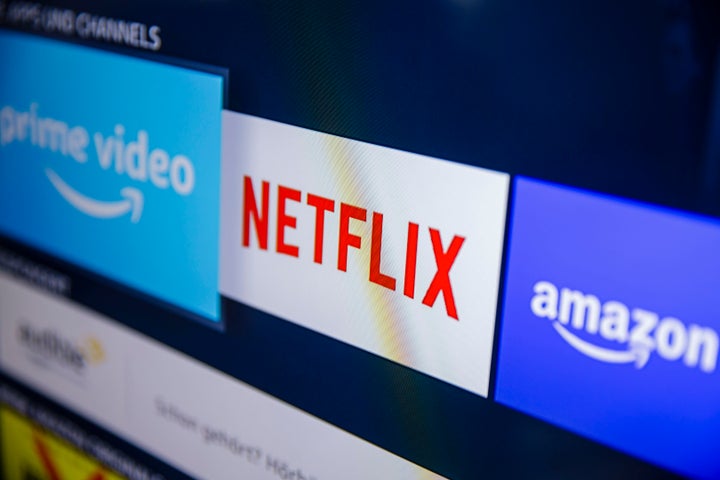I end most nights watching a show on a subscription service, reading news from a handful of subscription publications and newsletters, and brushing my teeth with a subscription toothbrush as music from a subscription service plays. Finally, I’ll fall asleep in my apartment, my biggest subscription expense of all.
As someone who writes about streaming services each week, I certainly thought there were too many new subscription services last year, with Disney+, HBO Max, Peacock, Apple TV+ and, yes, Quibi all debuting within a few months of each other. The services duked it out to offer varying Jennifer Aniston, Steve Carell and Reese Witherspoon projects ― apparently the mighty content algorithm’s holy trinity. Even so, all of these additions still felt second tier to Netflix, Hulu and Amazon Prime.
Now Discovery is packaging cable channels together into a streaming service (called, naturally, Discovery+), and Roku is reviving Quibi’s cursed content in a desperate attempt to get into the game as well.
All of this is to say, there are now too many subscriptions. You know this. And yet more subscriptions keep coming. Why?
Companies know that it’s quite hard to convince consumers to purchase individual goods, as a “buying decision” must occur each time. Subscriptions, on the other hand, are set it and forget it. Bundling shows and movies together in a “package of goods” further confuses the consumer since it’s hard to determine the true value of gaining access to 100 shows and movies you kind of, sort of want to watch.

Every week, I recommend the best of what’s out there in a section called Streamline, but I also like to remind readers that “best” is relative. Very few movies or shows rise to a true A+ level these days. Endless theories can be put forth as to why that’s the case, from the bottoming out of budgets for anything but superhero blockbusters to talent getting stretched too thin as companies go after quantity over quality. But regardless of the cause, the result is that most movies and shows are just “good.”
Given that there are very few “great” shows and movies on any of these subscription services, is it really worth it to keep subscribing? Most of the time, these services end up offering the content a la carte anyway. “The Crown” was one of the only great shows on Netflix last year. The most recent season will likely soon be on DVD along with the other three seasons.

I have to imagine that soon you’ll have no choice but to opt in to keep up with society, just like cellphone bills and storage for your “free” Gmail. How will you make that new friend or work contact if you’re not hip to the hit show on that streaming service you’re not subscribed to yet? The peer pressure will get to us all in the end.
We could, collectively, opt out of all subscriptions that don’t provide A+ value for a fair price. But we know that’s not realistic.

The more feasible path is to create a subscription “bubble.” Thanks to COVID-19, we’ve gotten pretty familiar with “bubbles.” A subscription bubble is basically the same concept, except without the dire health risks.
Basically every subscription in your life lets you to share access, some even by design like HBO Max, which allows three devices to stream simultaneously. So let’s make a resolution, as it were, to be proactive. Make an agreement with a circle of friends who trust each other enough to associate their credit cards with various accounts, and then share those passwords to great profit.
Here are three tips to get your bubble going:
1. Max out your allowed number of devices.

Streaming services tend to frown upon sharing passwords outside of your “household,” but aren’t we all family in a way? Won’t the great experiment of 2021 be whether we can all come together as one again after so much division? Surely the streaming services don’t want to stand in the way of that.
For what it’s worth, The Wall Street Journal recently quoted Netflix’s chief product officer, Greg Peters, as saying the service tracks password-sharing but has “no big plans to announce” anything about cracking down on it.
Streaming services do explicitly set terms on users streaming at the same time on multiple devices. So if you want to make sure you can share your password and everyone still gets to watch Steve Carell say “that’s what she said” at the same time, you’ll have to keep track of how many are watching at a time.
Here are how many screens you can watch concurrently on a few of the most notable services:
Netflix: One for “Basic,” two for “Standard” or four for “Premium”
Hulu: Two
Amazon Prime: Three
HBO Max: Three
Apple TV+: Six!
Disney+: Four
Peacock: Three
2. Share your passwords safely.

Again, the legality of sharing streaming passwords is technically shaky. But if you spend a few hours reading the fine print of your subscription service and determine you qualify for sharing your password, here are a couple suggestions for how to do it.
LastPass: This popular password manager offers encryption and secure sharing, explicitly for “shared video streaming.” I kind of hate recommending this, as you and your “family” member will have to sign up for yet another subscription to use and share passwords with LastPass. But it is a convenient way to keep track of your shared passwords in a secure way. And if this helps you share more passwords, then the cost could ultimately be worthwhile.
Jam: This company is still in beta, so I’m recommending it with the caveat that you should be wary of sharing too much data with the app (as you should be with any new tech company). But as a TechCrunch article explains, Jam was created explicitly for the purpose of sharing streaming passwords, and it seems like a pretty slick way of doing so.
3. And cross your fingers a company comes along to make this all easier.

Even with subscription bubbles, the sheer number of streaming services still leaves plenty of room for another company to make things less messy.
Last week, The Wall Street Journal looked at one such company called Struum. Here’s how it described the service:
Struum, a streaming service co-founded by former Discovery Inc. and Walt Disney Co. executives, won’t offer its own slate of original programming when it launches this spring. Instead, it will aim to give customers à-la-carte access to all content from hundreds of niche streaming services, offering users a way to stream individual shows and movies from various platforms without having to subscribe to each plan separately.
Struum’s plan is to essentially offer the a la carte model, which I’m all for as an alternative option. Many of these nascent streaming services only have one or two things I really want to watch in a year, so if I could just get those things without a subscription, that would be ideal. I wish Struum all the best.
But to put the true desired wish out into world: Now someone just has to make an app called “Household” of “Family Plan” where we can all come together to pool our services across the country while the app tracks which accounts have spots open at any given time. I’d happily subscribe to that.
If companies are going to put everything behind recurring subscriptions, while basically nobody but the CEOs of those companies can afford to pay for all the important ones, it’s time to collectively share.
Airbnb just got valued at $75 billion for essentially allowing people to share their rent subscription.
Surely the streaming world can be next.